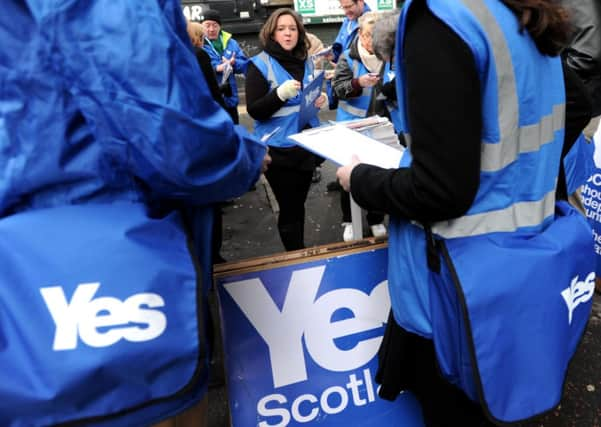John Curtice: Votes don’t add up to independence


Already, they state, 70 per cent of undecided voters are switching to Yes rather than to No.
This optimism is based in part on what Yes Scotland claims to have discovered by asking people their attitudes towards independence in a more subtle way than most polls do. Rather than simply asking people whether they will vote Yes or No, it has invited voters to place themselves on a scale from one to ten, where one means they are “completely against an independent Scotland” and ten that they are “completely for an independent Scotland”.
Advertisement
Hide AdAdvertisement
Hide AdThis approach, it argues, has uncovered a growing body of people who are in the middle on the independence question and who, with a little persuasion, can be converted from a No or undecided voter into a Yes one.
To put these claims to the test, we included the Yes Scotland question in our latest ICM poll. The picture it paints looks rather less optimistic for the Yes side than has been suggested.
First, even if they were all to be won over, it looks as though there are insufficient voters in the middle on the independence issue to deliver the Yes side victory. Second, undecided voters look more inclined to end up in the No than in the Yes camp. At present, 7 per cent of voters give themselves a score of 5 on the scale – that is just short of the point where they would tip over into being more inclined to support independence rather than oppose it.
As one might expect, most of these voters say they are undecided how they will vote (and virtually none of them say they will vote Yes). They are also more likely to be younger voters – and to have backed Labour in 2011.
Even if every single one of these voters (including those who say they will vote No) were to be won over by 18 September – a highly optimistic assumption – the Yes side would still be just short of victory, with 49 per cent of the vote.
The task facing the Yes campaign in the next two months is apparently more formidable than simply winning over those who only have a few doubts about independence left.
True, it can be argued that many an undecided voter is genuinely torn about which way to vote and that their support really is up for grabs. Nearly two-thirds of those undecided voters who are willing to say where they stand on the independence scale (and over three-quarters of them do so) place themselves somewhere between 4 and 7.
Even so, undecided voters look more like potential No voters than Yes ones. As many as two in three put themselves somewhere in the lower, anti-independence half of the scale (that is, between 1 and 5). Only one in three place themselves in the upper pro-independence half.
Advertisement
Hide AdAdvertisement
Hide AdIf undecided voters were to split two to one in favour of a No vote, then the Yes side’s share of the vote would fall back to 41 per cent – which is little more than where it was during much of last year. Such an outcome would leave the Yes side with a referendum campaign that in the end had apparently achieved very little.
The next two months will determine whether it can avoid that fate.
• John Curtice is Professor of Politics, Strathclyde University